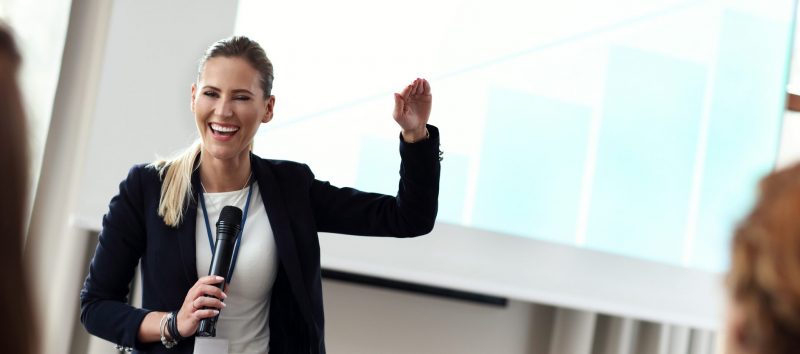Have you been asked to present information but don’t know where to start? That’s a common theme for most of us who work in an office setting. Thankfully, the challenge of leading a presentation doesn’t have to be so daunting as long as you make sure to do a few things.
We can break down a presentation into a beginning, middle and end, and each part has its own purpose. With that in mind, here are a few tips that lay out the process for creating a good presentation.
Beginning – How well should you structure your presentation?
- Have audacity – be authentic, be yourself, and show enthusiasm.
- Tell a relatable or introductory true story about what you plan to present so that your audience can relate to you.
- Know your audience and play to them.
- Keep it simple.
- Determine if you will need notes.
- Notes can be were very helpful when presenting.
- You can hide your notes on screen to make your presentation more effective.
- If your content is sensitive in nature, then you may consider including a script to get the wording right when you do the presentation.
- If your subject matter is more complex, then you should consider using detailed notes so as to not misstate a detail or glance over a nuance.
- Write an opening statement that is catchy, something that will grab the audience’s attention, after you decide your structure.
- Introduce yourself and explain how the subject will benefit your audience – this will help build a rapport with your audience.
Middle – What should you include in the middle of part of the presentation?
- Focus on three to five main points to discuss with your audience in most cases.
- Use point headers in your presentation and build upon them using subpoints with details.
- Clearly state your content and include visuals on your slides, charts and graphs.
- Visuals help connect your audience to your information.
- Be concise and use repetition to reinforce points – this helps your audience to remember what you told them.
Closing –What should the audience know?
- Give your audience something to remember by stating a famous quote or emphasizing an inspirational statement.
- Leave a memorable impression about the subject or main point, whatever you do.
- Tell your audience what you expect them to do with your information, and challenge them.
- Be sure to thank your audience and ask for questions to close out your presentation.
Interested in becoming a Featured Contributor? Email topics you’re interested in covering for GovLoop to featuredcontributors@govloop.com. And to read more from our Spring 2021 Cohort, here is a full list of every Featured Contributor during this cohort.
Wanda Dandridge is a subject matter expert on financial management systems for the Defense Logistics Agency (DLA) Energy located at Fort Belvoir, Virginia. Her government career spans over 15 years, starting as an Army intern in financial management, then subsequently emerging as a transformational leader with DLA specializing in budget analysis, logistical support and employee development. Wanda’s greatest career accomplishment is receiving the Federal Employee of the Year Award with DLA Energy Pacific in 2012. Her philosophy is to lead by example while fostering others for their desired purpose. She is a Certified Defense Financial Manager (CDFM) who enjoys volunteering in her local community.





Leave a Reply
You must be logged in to post a comment.